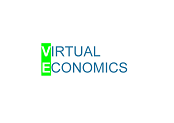Modelling the Level of the Enterprise’ Resource Security Using Artificial Neural Networks
DOI:
https://doi.org/10.34021/ve.2023.06.01(5)Keywords:
artificial neural networks, enterprise resource security, modelling, multilayer perceptron, predictionAbstract
Significant attention is paid to increasing the efficiency of using resources by business entities due to the growing dependence between economic growth and the number of consumed resources, problems with access to various types of resources on the market, as well as their exhaustion in the face of growing needs. At the same time, various digitization tools are widely used to solve these problems. This paper considers artificial neural networks as a tool for modelling and forecasting the level of resource security in the economic activity of an enterprise, which is divided into separate functional blocks (production, personnel, finance). To this end, a multi-layer perceptron model (MLP) was used by constructing and training a network on several possible architectures in order to select the one with the highest classification quality. In the process of training, testing and verification of MLP networks, 32 indicators were used as input data, characterizing the state and efficiency of using various types of enterprise resources, for 85 enterprises over the five years of their operation. The initial data were the values of the safety zone, which were set separately for each indicator, subsystem and enterprise using economic-mathematical modelling on the basis of determining the acceptable limits of indicator fluctuations. As a result, four MLP networks were selected (one network for each of the three functional subsystems, as well as one for the enterprise as a whole), which were characterized by the highest value of quality at each stage of calculations (training, testing, verification). The performed calculations proved that artificial neural networks can be a useful and convenient tool for determining the security level of an enterprise in various directions of its economic activity (types of consumed or involved resources), and therefore can be more widely used by business entities to increase the validity of management decisions.
Downloads
References
United Nations. (2015). Transforming our world: the 2030 Agenda for Sustainable Development. https://documents-dds-ny.un.org/doc/UNDOC/GEN/N15/291/89/PDF/N1529189.pdf?OpenElement
Abazov, R. (2021). Engaging in the internationalization of education and SDGs: Case study on the global hub of UNAI on sustainability. E3S Web of Conferences, (307), Article 06001. https://doi.org/10.1051/e3sconf/202130706001.
Miskiewicz, R. (2022). Clean and Affordable Energy within Sustainable Development Goals: The Role of Governance Digitalization. Energies, 15(24), Article 9571. https://doi.org/10.3390/en15249571.
Miśkiewicz, R., Matan, K., & Karnowski, J. (2022). The Role of Crypto Trading in the Economy, Renewable Energy Consumption and Ecological Degradation. Energies, 15(10), Article 3805. https://doi.org/10.3390/en15103805.
Pudryk, P., Kwilinski, A., Lyulyov, O., & Pimonenko, T. (2023). Towards Achieving Sustainable Development: Interactions between Migration and Education. Forum Scientiae Oeconomia, 11(1), 113-131.
Kwilinski, A. (2018). Mechanism of Modernization of Industrial Sphere of Industrial Enterprise in Accordance with Requirements of the Information Economy. Marketing and Management of Innovations, (4), 116-128. https://doi.org/10.21272/mmi.2018.4-11.
Kwilinski, A., Lyulyov, O., Pimonenko, T., Dzwigol, H., Abazov, R., & Pudryk, D. (2022). International Migration Drivers: Economic, Environmental, Social, and Political Effects. Sustainability, 14(11), Article 6413. https://doi.org/10.3390/su14116413.
Kwilinski, A., Slatvitskaya, I., Dugar, T., Khodakivska, L., Derevyanko, B. (2020). Main Effects of Mergers and Acquisitions in International Enterprise Activities. International Journal of Entrepreneurship, 24, 1-8.
Kwilinski, A., Dalevska, N., & Dementyev, V.V. (2022). Metatheoretical Issues of the Evolution of the International Political Economy. Journal of Risk and Financial Management, 15(3), Article 124. https://doi.org/10.3390/jrfm15030124.
Miskiewicz, R. (2020). Efficiency of electricity production technology from post-process gas heat: Ecological, economic and social benefits. Energies, 13(22), Article 6106. https://doi.org/10.3390/en13226106.
Szczepańska-Woszczyna, K., Gedvilaitė, D., Nazarko, J., Stasiukynas, A., Rubina, A. (2022). Assessment of Economic Convergence among Countries in the European Union. Technological and Economic Development of Economy, 28(5), 1572-1588. https://doi.org/10.3846/tede.2022.17518.
Letunovska, N., Lyuolyov, O., Pimonenko, T., & Aleksandrov, V. (2021). Environmental management and social marketing: A bibliometric analysis. Paper presented at the E3S Web of Conferences, 234, article number 00008. https://doi.org/10.1051/e3sconf/202123400008
Lyulyov, O., Pimonenko, T., Stoyanets, N., & Letunovska, N. (2019). Sustainable development of agricultural sector: Democratic profile impact among developing countries. Research in World Economy, 10(4), 97-105. https://doi.org/10.5430/rwe.v10n4p97
Prokopenko, O., Cebula, J., Chayen, S., & Pimonenko, T. (2017). Wind energy in israel, poland and ukraine: Features and opportunities. International Journal of Ecology and Development, 32(1), 98-107.
Chigrin, O., & Pimonenko, T. (2014). The ways of corporate sector firms financing for sustainability of performance. International Journal of Ecology and Development, 29(3), 1-13.
Cebula, J., & Pimonenko, T. (2015). Comparison financing conditions of the development biogas sector in poland and ukraine. International Journal of Ecology and Development, 30(2), 20-30
Pimonenko, T., Prokopenko, O., & Dado, J. (2017). Net zero house: EU experience in ukrainian conditions. International Journal of Ecological Economics and Statistics, 38(4), 46-57.
Barzylovych, A., Ursakiі, Y., Nadezhdenko, A., Mamatova, T., Chykarenko, O., & Kravchenko, S. (2021). The influence of medical services public management on the population’ life quality. WSEAS Transactions on Environment and Development, 17, 619-629. https://doi.org/10.37394/232015.2021.17.60.
Lyulyov, O., Chortok, Y., Pimonenko, T., & Borovik, O. (2015). Ecological and economic evaluation of transport system functioning according to the territory sustainable development. International Journal of Ecology and Development, 30(3), 1-10.
Lyulyov, O., & Shvindina, H. (2017). Stabilization pentagon model: Application in the management at macro- and micro-levels. Problems and Perspectives in Management, 15(3), 42-52. https://doi.org/10.21511/ppm.15(3).2017.04
Chen, Y., Kwilinski, A., Chygryn, O., Lyulyov, O., & Pimonenko, T. (2021). The Green Competitiveness of Enterprises: Justifying the Quality Criteria of Digital Marketing Communication Channels. Sustainability, 13(24), Article 13679. https://doi.org/10.3390/su132413679.
Chen, Y., Lyulyov, O., Pimonenko, T., & Kwilinski, A. (2023). Green development of the country: Role of macroeconomic stability. Energy & Environment, 0(0). https://doi.org/10.1177/0958305X231151679
Chygryn, O., Bilan, Y., & Kwilinski, A. (2020). Stakeholders of Green Competitiveness: Innovative Approaches for Creating Communicative System. Marketing and Management of Innovations, (3), 358-370. https://doi.org/10.21272/mmi.2020.3-26.
Lyeonov, S. V., Vasylieva, T. A., & Lyulyov, O. V. (2018). Macroeconomic stability evaluation in countries of lower-middle income economies. Naukovyi Visnyk Natsionalnoho Hirnychoho Universytetu, (1), 138-146. https://doi.org/10.29202/nvngu/2018-1/4
Lyulyov, O., Lyeonov, S., Tiutiunyk, I., & Podgórska, J. (2021). The impact of tax gap on macroeconomic stability: Assessment using panel VEC approach. Journal of International Studies, 14(1), 139-152. https://doi.org/10.14254/2071-8330.2021/14-1/10
Yevdokimov, Y., Melnyk, L., Lyulyov, O., Panchenko, O., & Kubatko, V. (2018). Economic freedom and democracy: Determinant factors in increasing macroeconomic stability. Problems and Perspectives in Management, 16(2), 279-290. https://doi.org/10.21511/ppm.16(2).2018.26
Dutta, S., Lanvin, B., Rivera Leon, L., & Wunsch-Vincent, S. (2022). Global Innovation Index 2022: What is the future of innovation-driven growth? Geneva: World Intellectual Property Organization. https://www.wipo.int/edocs/pubdocs/en/wipo-pub-2000-2022-en-main-report-global-innovation-index-2022-15th-edition.pdf.
Hamadeh, N., Rompaey, C., Metreau, E., & Eapen, S.G. (2022). New World Bank country classifications by income level: 2022-2023. https://blogs.worldbank.org/opendata/new-world-bank-country-classifications-income-level-2022-2023.
Organisation for economic co-operation and development (2022). Material resources. Material footprint per capita. https://stats.oecd.org/Index.aspx?DataSetCode=MATERIAL_RESOURCES.
Kozachenko, H., & Pohorelov, Yu. (2015). Assessment of economic security of an enterprise: analysis of the main approaches. Management of the State, Region, and Enterprise Security: Problems and Challenges of Today, 1, 238-251.
Vasyltsiv, T., & Mykytiuk, R. (2012). Udoskonalennia metodyky otsiniuvannia ekonomichnoi bezpeky pidpryiemstva [Improving the methodology for assessing the economic security of an enterprise]. Naukovyi visnyk NLTU Ukrainy – Science Bulletin of UNFU, 22(14), 181-188.
Cherep, A., Babmindra, D., Khudoliei, L., & Kusakova, Y. (2020). Assessment of the level of financial and economic security at machine-building enterprises: Evidence from Ukraine. Problems and Perspectives in Management, 18(1), 33-47. https://doi.org/10.21511/ppm.18(1).2020.04.
Shynkar, S., Gontar, Z., Dubyna, M., Nasypaiko, D., & Fleychuk, M. (2020). Assessment of economic security of enterprises: Theoretical and methodological aspects. Business: Theory and Practice, 21(1), 261-271. https://doi.org/10.3846/btp.2020.11573.
Kharazishvili, Y., Kwilinski, A., Grishnova, O., & Dzwigol, H. (2020). Social safety of society for developing countries to meet sustainable development standards: Indicators, level, strategic benchmarks (with calculations based on the case study of Ukraine). Sustainability, 12(21), Article 8953. https://doi.org/10.3390/su12218953.
Gushchenskaya, N., & Anfalova, A. (2018). Methodology of determining the integral indicator of resource security of agricultural organizations. Bulletin of KSAA: economic science, 1, 7-9.
Kwilinski, A. (2019). Implementation of Blockchain Technology in Accounting Sphere. Academy of Accounting and Financial Studies Journal, 23(SI2), 1-6.
Kwilinski, A., Litvin, V., Kamchatova, E., Polusmiak, J., & Mironova, D. (2021). Information Support of the Entrepreneurship Model Complex with the Application of Cloud Technologies. International Journal of Entrepreneurship, 25(1), 1-8.
Kwilinski, A., Tkachenko, V., & Kuzior, A. (2019). Transparent Cognitive Technologies to Ensure Sustainable Society Development. Journal of Security and Sustainability Issues, 9(2), 561-570.
Kwilinski, A., & Kuzior, A. (2020). Cognitive Technologies in the Management and Formation of Directions of the Priority Development of Industrial Enterprises. Management Systems in Production Engineering, 28(2), 133-138. https://doi.org/10.2478/mspe-2020-0020.
Kwiliński, A., Polcyn, J., Pająk, K., & Stępień, S. (2021). Implementation of Cognitive Technologies in the Process of Joint Project Activities: Methodological Aspect. In Conference Proceedings - VIII International Scientific Conference Determinants of Regional Development (pp. 96-126). Pila, Poland: Stanislaw Staszic University of Applied Sciences in Piła. https://doi.org/10.14595/CP/02/006.
Miśkiewicz, R. (2021), Knowledge and innovation 4.0 in today's electromobility, in: Z. Makieła, M.M. Stuss, and R. Borowiecki (Eds.), Sustainability, Technology and Innovation 4.0 (pp. 256-275), London, UK: Routledge.
Vaníčková, R., & Szczepańska-Woszczyna, K. (2020). Innovation of business and marketing plan of growth strategy and competitive advantage in exhibition industry. Polish Journal of Management Studies, 21(2), 425-445. https://doi.org/10.17512/pjms.2020.21.2.30
Churchland, P., & Sejnowski, T. (1992). The Computational Brain. Cambridge, MA : MIT Press.
Haykin, S. (2008). Neural Networks and Learning Machines, 3rd edition. Canada, McMaster University: Pearson.
Dacko-Pikiewicz, Z. (2019). Building a family business brand in the context of the concept of stakeholder-oriented value. Forum Scientiae Oeconomia, 7(2), 37-51. https://doi.org/10.23762/FSO_VOL7_NO2_3.
Dzwigol, H., Dzwigol-Barosz, M., Miskiewicz, R., & Kwilinski, A. (2020). Manager Competency Assessment Model in the Conditions of Industry 4.0. Entrepreneurship and Sustainability Issues, 7(4), 2630-2644. https://doi.org/10.9770/jesi.2020.7.4(5).
Szczepańska-Woszczyna, K., & Gatnar, S. (2022). Key Competences of Research and Development Project Managers in High Technology Sector. Forum Scientiae Oeconomia, 10(3), 107-130. https://doi.org/10.23762/FSO_VOL10_NO3_6.
Trzeciak, M., Kopec, T.P., & Kwilinski, A. (2022). Constructs of Project Programme Management Supporting Open Innovation at the Strategic Level of the Organisation. Journal of Open Innovation: Technology, Market, and Complexity, 8(1), Article 58. https://doi.org/10.3390/joitmc8010058.
Aleksander, I., & Morton, H. (1990). An introduction to Neural Computing. London, Chapman and Hall.
Pushak, Y., Lagodiienko, V., Basiurkina, N., Nemchenko, V., & Lagodiienko, N. (2021). Formation the system for assessing the economic security of enterprise in the agricultural sector. Business: Theory and Practice, 22(1), 80-90. https://doi.org/10.3846/btp.2021.13013.
Korchevska, L., Zhosan, G., & Kavun, S. (2013). Social Responsibility as a Contextual Component of the Enterprise Economic Security. Journal of Finance and Economics, 1 (4), 95-104. https://doi.org/10.12691/jfe-1-4-6.
Vasylishyn, S., Ulyanchenko, O., Bochulia, T., Herasymenko, Y., & Gorokh, O. (2021). Improvement of analytical support of economic security management of the agricultural enterprises. Agricultural and Resource Economics, 7(3), 123-141. https://doi.org/10.51599/are.2021.07.03.08.
Frolova, L., & Rozhenko, O. (2016). Methodological approaches to assessing the economic security of an enterprise. Actual problems of economics, 3(177), 199-209. http://nbuv.gov.ua/UJRN/ape_2016_3_26.
Kravchenko, S., & Pankova, M. (2021). Multivariate statistical analysis in determining the enterprises' behavior with resources. Paper presented at the E3S Web of Conferences, 307, Article 05003. https://doi.org/10.1051/e3sconf/202130705003.
Hashemi Fath, A., Madanifar, F., & Abbasi, M. (2020). Implementation of multilayer perceptron (MLP) and radial basis function (RBF) neural networks to predict solution gas-oil ratio of crude oil systems. Petroleum, 6(1), 80-91. https://doi.org/10.1016/j.petlm.2018.12.002.
Rojek, I., & Studzinski, J. (2019). Detection and localization of water leaks in water nets supported by an ICT system with artificial intelligence methods as away forward for smart cities. Sustainability (Switzerland), 11(2), Article 518. https://doi.org/10.3390/su11020518.
Bogachov, S., Kwilinski, A., Miethlich, B., Bartosova, V., & Gurnak, A. (2020). Artificial intelligence components and fuzzy regulators in entrepreneurship development. Entrepreneurship and Sustainability Issues, 8(2), 487-499. https://doi.org/10.9770/jesi.2020.8.2(29).
Fattah, M. A., Morshed, S. R., & Morshed, S. Y. (2021). Multi-layer perceptron-Markov chain-based artificial neural network for modelling future land-specific carbon emission pattern and its influences on surface temperature. SN Applied Sciences, 3(3), Article 359. https://doi.org/10.1007/s42452-021-04351-8.
Zhang, G., Wang, M., & Liu, K. (2021). Deep neural networks for global wildfire susceptibility modelling. Ecological Indicators, 127, Article 107735. https://doi.org/10.1016/j.ecolind.2021.107735.
Downloads
Published
How to Cite
Issue
Section
License

This work is licensed under a Creative Commons Attribution-NonCommercial 4.0 International License.





